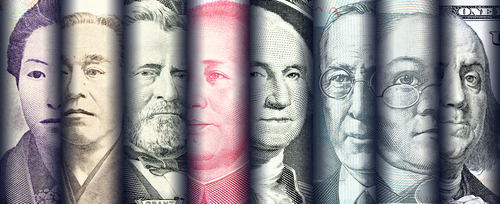An example of this can be seen as iron ore prices hit a six and a half year high on Thursday as the Chinese construction and manufacturing sector claims to be experienced levels of activity not seen for almost a decade. Fastmarkets MB reported that benchmark 62% Fe fines imported into Northern China were changing hands for $129.92 a tonne on Tuesday, up 2.1% on the day. That would be the highest level for the steel-making raw material since mid-January 2014 and put gains for 2020 to over 40%.
Home » Posts tagged 'pboc'
Tag Archives: pboc
Is China Preparing A Gold-Backed Yuan: Beijing Greenlights Purchases Of Billions In Bullion
Is China Preparing A Gold-Backed Yuan: Beijing Greenlights Purchases Of Billions In Bullion
In 2018, the Chinese launched a gold-backed, yuan-denominated oil futures contract. These contracts were priced in yuan, but convertible to gold, raising the prospect that “the rise of the petroyuan could be the death blow for the dollar.”
Two weeks ago, The IMF reported that the global share of US-dollar-denominated exchange reserves dropped to 59.0% in the fourth quarter, according to the IMF’s COFER data released today. This matched the 25-year low of 1995.
Also last week, Peter Thiel warned “Bitcoin should also be thought [of] in part as a Chinese financial weapon against the US… It threatens fiat money, but it especially threatens the U.S. dollar.”
All of which sets the stage for the dramatic headlines that hit this morning, as Reuters reports that China has given domestic and international banks permission to import large amounts of gold into the country,
The People’s Bank of China (PBOC), the nation’s central bank, controls how much gold enters China through a system of quotas given to commercial banks.It usually allows enough metal in to satisfy local demand but sometimes restricts the flow.
In recent weeks it has given permission for large amounts of bullion to enter, the sources said.
“We had no quotas for a while. Now we are getting them … the most since 2019,”said a source at one of the banks moving gold into China.
…click on the above link to read the rest of the article…
China’s Rapidly Expanding Credit Affects Global Markets
China’s Rapidly Expanding Credit Affects Global Markets
…click on the above link to read the rest of the article…
World Economy Preparing for Collapse
World Economy Preparing for Collapse
The world has changed dramatically in the course of this orchestrated and intended collapse of the global economy in order to launch this Great Reset. In the course of several months, we have watched a deliberate economic disaster under the pretense of this coronavirus pandemic. While the main objective of one group has been the create a New Green World Order, they relied upon Socialists who realize that their economic dreams are also collapsing. As a result, this combined force is out to change the world and the real agenda is the New Green Socialist Agenda. They have pretended that there has been this huge tragically large number of human lives being lost when more people die from car crashes. They have deliberately terrorized people to achieve their agenda.
They have embarrassed politicians and countries into implementing quarantines, social distancing, and have locked down the world population where NOTHING of such a magnitude has EVER taken place in 6,000 years of recorded history. These drastic practices to contain this exaggerated pandemic have unleashed a Sovereign Debt Crisis our computer has been forecasting but never in my personal imagination w3ould I have ever anticipated that this would be deliberate.
The cost of this Great Lockdown is virtually beyond comprehension. We are witnessing people hoarding cash around the world. The magnitude and speed of collapse in economic activity that has followed is unlike anything experienced in our lifetimes. Yet the real trend starting to unfold is the collapse in public confidence. We are now even beginning to see runs on banks to hoard cash in China as well. Our sources in China are reporting that the People’s Bank of China initiated a strategic plan in the Hebei province which requires retail and business clients to pre-report any large withdrawals or deposits. They will expand this program in October to other provinces.
…click on the above link to read the rest of the article…
China’s Central Bank Vows To Expand Total Credit By 30% Of GDP In 2020
China’s Central Bank Vows To Expand Total Credit By 30% Of GDP In 2020
One of the curiosities about the current global financial crisis is that unlike the global financial crisis of 2008 when a massive credit injection by China sparked a generous reflationary wave around the world which pulled it out of a deflationary slump, this time around China has been far more modest as the following chart shows.
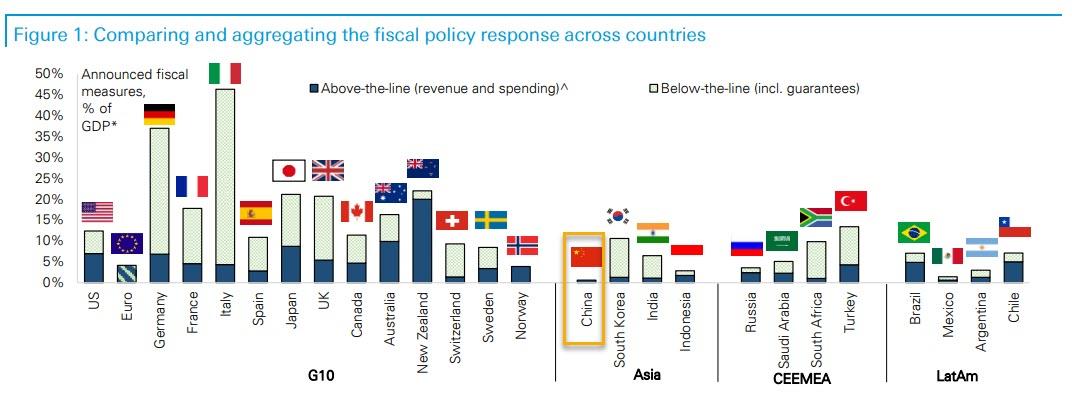
All that may be about to change.
Speaking in a financial forum in Shangha, China’s central bank governor Yi Gang said that China will keep liquidity ample in the second half of the year, but it should consider in advance the timely withdrawal of policy measures aimed at countering the effects of the COVID-19 pandemic.
“The financial support during the epidemic response period is (being) phased, we should pay attention to the hangover of the policy,” Yi said. “We should consider the timely withdrawal of policy tools in advance.”
In other words, just like the Fed, China is pretending that whatever is coming will be temporary. Which, in a world of helicopter money will never again be the case.
But more importantly, we know that in order to boost its stagnating economy, China is about to unleash a historic credit injection: Yi said that new loans are likely to hit nearly 20 trillion yuan ($2.83 trillion) this year, up from a record 16.81 trillion yuan in 2019, and total social financing could increase by more than 30 trillion yuan ($4.2 trillion), or about 30% of GDP. A similar number for the US would be about $7 trillion which is more or less what the US deficit will be over the next 12 months.
In other words, we’re going to need a much bigger chart of China’s broad credit.
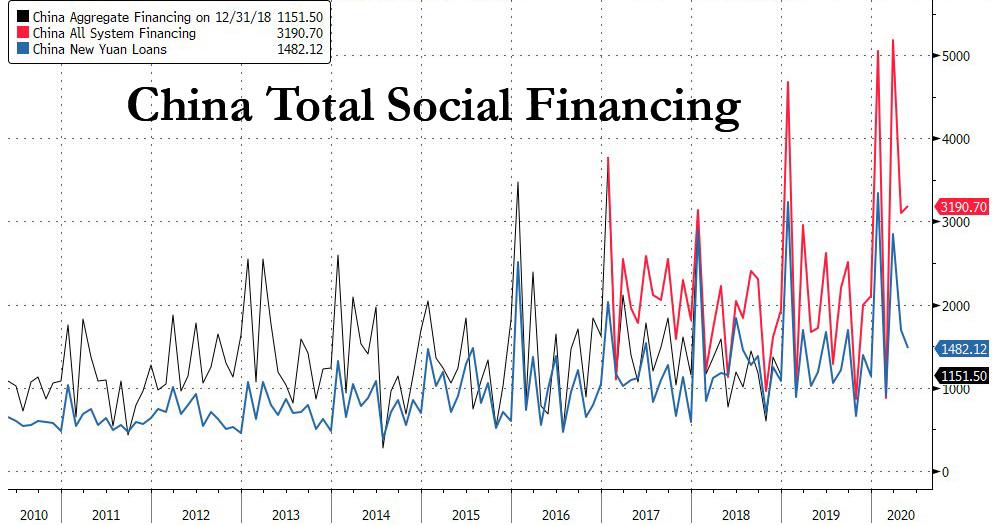
Yi added that the bank’s balance sheet remains stable around 36 trillion yuan.
…click on the above link to read the rest of the article…
Corona Virus? The Chinese Central Bank Has a “Solution”

Corona Virus? The Chinese Central Bank Has a “Solution”
In response to the economic paralysis brought about by the coronavirus, the Chinese central bank has pumped $243 billion into financial markets. On Monday February 3 2020, China’s equity market shed $393 billion of its value.
Most experts are of the view that in order to counter the damage that the coronavirus has inflicted, loose monetary policy is of utmost importance to stabilize the economy. In this way of thinking, it is believed that the massive monetary pumping will lift overall demand in the economy and this in turn is likely to move the economy out of the stagnation hole.
On this way of thinking consumer confidence, which has weakened as a result of the coronavirus could be lifted by massive monetary pumping.
Now, even if consumers were to become more confident about economic prospects, how is all this related to the damage that the virus continues to inflict? Would the increase in consumer confidence due to the monetary pumping cause individuals to go back to work?
Unless the causes of the virus are ascertained or unless some vaccine is produced to protect individuals against the virus, they are likely to continue to pursue a life of isolation. This means that most people are not going to risk their life and start using the newly pumped money to boost their spending.
It seems that whenever a crisis emerges, central banks are of the view that first of all they must push plenty of money to “cushion” the side effects of the crisis. The central bankers following the idea that if in doubt “grease” the problem with a lot of money.
…click on the above link to read the rest of the article…
State of Denial
State of Denial
Once again investors are made to believe that nothing matters. Only 2 trading days after Friday’s sell off $NDX made new all time history highs. Only 3 days after Friday’s sell-off $SPX made a new all time closing high. Only 4 days after Friday’s sell off $DJIA, $SPX and $NDX make new all time human history highs in premarket. Fours day, four up gaps, all unfilled at the time of this writing. The market of the overnight gap ups.
Why? Because the economic impact of the coronavirus is over or contained? Of course not, it’s far from any of that. Shutdowns persist, warnings of individual companies are mounting i.e. $TSLA, tumbling a day after the technical warning issued, global economic growth estimates are coming down and with them invariably take downs in earnings estimates.
What do markets do? Make new all time highs, back on the multiple expansion game from 2019 when no slowdown in earnings mattered as the liquidity injections from our central bank overlords overrode everything.
This week the PBOC injected liquidity, the Fed kept flushing repo liquidity into the system, and of course a continued buying of treasure bills.
And so markets continue on their path of never pricing in any bad news and continue to disconnect farther and farther from the underlying size of the global economy no matter the ongoing data:

Baltic Dry Index:

But there are no bubbles central bankers tell us. Don’t insult our intelligence I say. Especially since they perfectly well know that policies and words are closely followed by markets and are market impacting:

Lagarde: Traditionally, as central bankers we have been more comfortable speaking to experts and markets than to the general public. Markets closely follow what we do and what we say, and surveys and studies find that we are well understood by them.
China Bans Selling, Plans Massive Liquidity Injection To Prevent Market Crash
China Bans Selling, Plans Massive Liquidity Injection To Prevent Market Crash
Judging by the collapse in Chinese futures and the Offshore Yuan over the past week, China’s key cash equity index – The Shanghai Composite – is set to plunge around 6-8% as the market re-opens for the first time since Lunar New Year (and the coronavorus chaos).
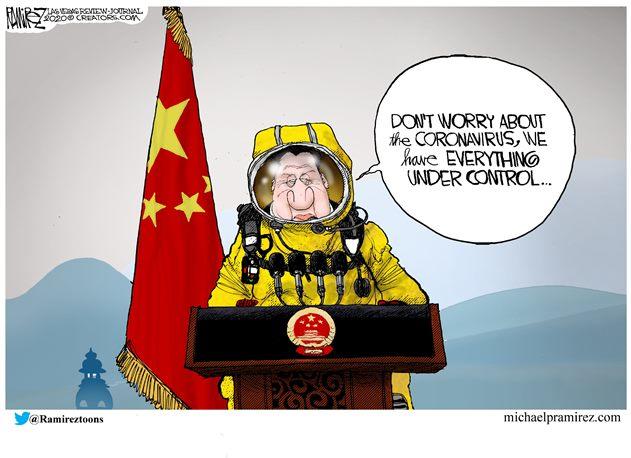
China stock futures have tumbled…
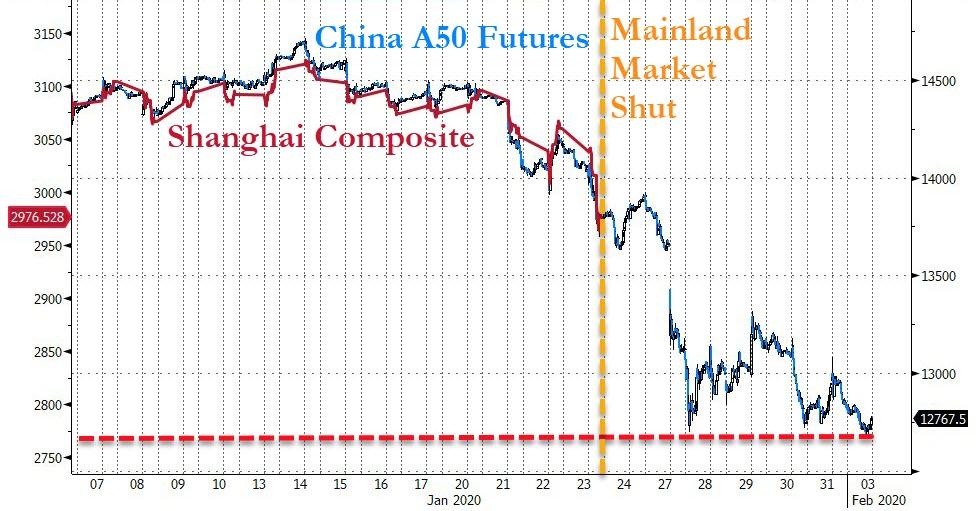
And Offshore Yuan is fighting at the 7.00/USD level…
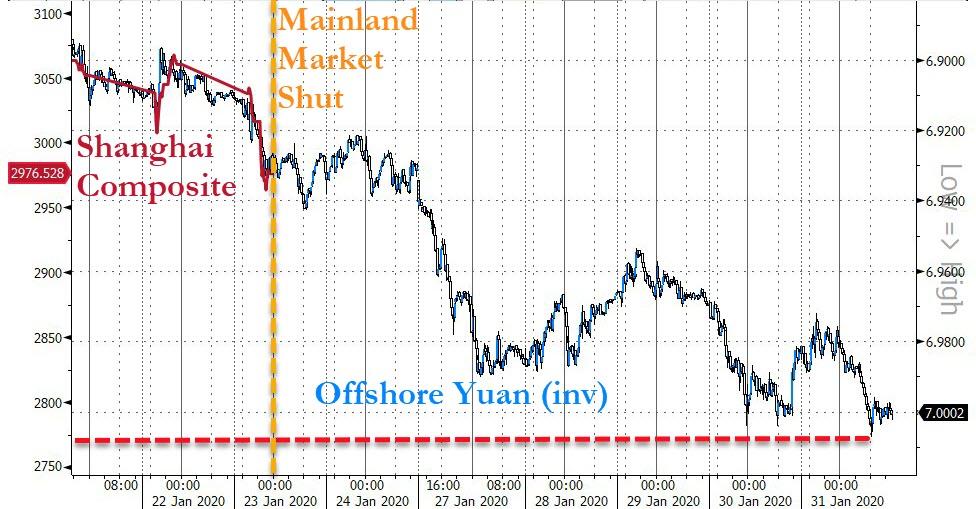
Which of course will not do for the nation has to maintain the appearance of a minor flesh-wound than a catastrophic coronary. And so, as Bloomberg reports, China unveiled a raft of measures over the weekend to aid companies hit by the coronavirus outbreak and also shore up financial markets.
Quarantative easing?
The People’s Bank of China announced that the total injection announced was 1.2 trillion yuan, the largest single-day addition of its kind in data going back to 2004.
The money will be supplied using reverse repurchase agreements to ensure liquidity is “reasonably ample” during the outbreak, according to the PBOC.
The new measures follow the announcement last week that China’s biggest banks will lower interest rates for firms in Hubei, the center of the outbreak.
However, as Tommy Xie, an economist at Oversea-Chinese Banking Corp notes, the net effect of this admittedly huge liquidity injection is much lower as there are more than 1 trillion yuan of short-term funds scheduled to mature on Monday.
“The amount of the net injection isn’t huge. The PBOC may want to retain some flexibility, which means it can add more liquidity in the rest of the week if the sentiment is too bad.”
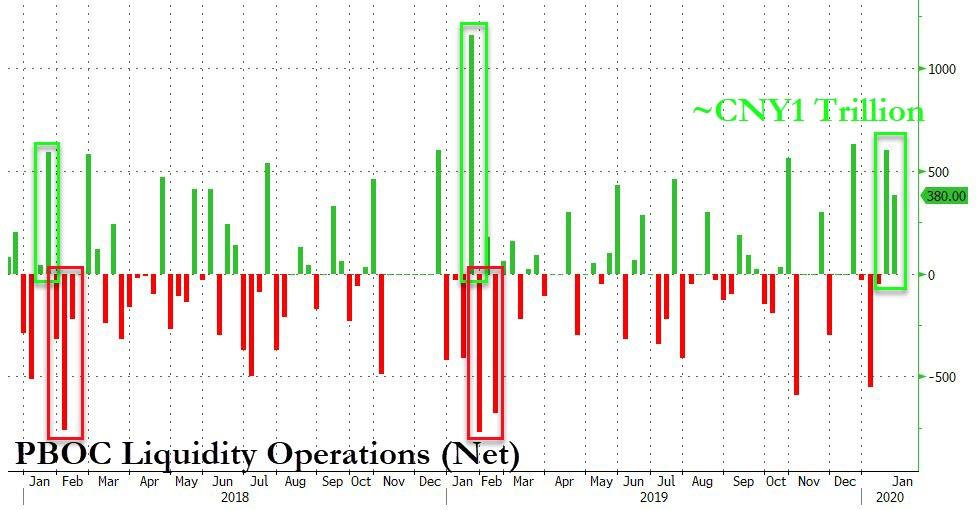
Finally, we wonder if even this additional liquidity injection will be big enough as judging by Dr.Copper, the Chinese economy is about to be hit by the biggest shock in recent history…
…click on the above link to read the rest of the article…
China’s Growing Economic Miracle…(Collapse). Or… Everyone Pays the Piper!
China’s Growing Economic Miracle…(Collapse). Or… Everyone Pays the Piper!

In emulating the American economic raison d’etre, China has attempted to develop its unique capitalist model while ignoring that it too will soon suffer the same fate for the same reason: Unsustainable debt. When examining the recent realities of Chinese banking and finance over the past year it seems the steam that president Xi Jinping touts as powering the engine of his purported economic miracle of a master-planned economy is only a mirage, now almost completely evaporated before his eyes.
Like the many other similarly foolish western nations, China seeks only one path out of this fiscal death spiral, one that will likely spell doom and/or revolution in many countries soon: More debt.
China is becoming increasingly unable to continue to pay into the base of the world’s largest pyramid scheme of an economy and the cracks in the bubble are showing. This past year, saw three of the 4,279 Chinese lenders almost fail, if not for the massive intervention by the People’s Bank of China (PBoC) of immediate liquidity via more debt. The Chinese economic miracle is built on unsustainable debt-based infrastructure projects over the past two decades that have provided China with a face of prosperity to show the world, but this is only a mask to hide the limited countrywide success of the Chinese miracle into the rural areas. The injection of $Trillions in capital has seen China distribute these sums across the base of its economy creating a GDP that hit a high of 14.2 % in 2007 then averaged nearly 9% for the next decade before dropping yearly to 6.1% in 2018. All this growth had produced a personal affluence to a sub-set of Chinese society that has stoked this appearance of a flourishing economy.
…click on the above link to read the rest of the article…
China’s Central Bank to Lead Real-World Pilot of Digital Yuan: Report
China’s Central Bank to Lead Real-World Pilot of Digital Yuan: Report

China is at last planning to conduct the first real-world test of its central bank digital currency (CBDC), fresh reports claim.
According to local news outlet Caijing on Dec. 9, the initial pilot for the CBDC is set for the city of Shenzhen before the end of 2019, and may possibly include the city of Suzhou.
Banks in a digital currency “horse race”
Under the auspices of China’s central bank, the People’s Bank of China (PBoC), four major banks and major economic participants such as China Telecom will test digital currency payments.
“One step will be to rationally select the pilot verification area, scenario and service scope, and steadily promote the introduction and application of digital form of fiat currency,” Caijing explains.The article continues:
“Compared with the previous pilot, this time the central bank’s legal digital currency pilot will go out of the central bank system and enter real service scenarios such as transportation, education, and medical treatment, reaching C-end users and generating frequent applications.”
In Shenzhen, the PBoC is encouraging what it describes as a “horse race” — each bank will manage the digital currency differently, competing against each other in order to secure its model’s wider adoption in the future.
It added that other locales could be included in the testing, but the exact details remain unspecified.
PBoC beats world competition
The debut will nonetheless make the PBoC the world’s first central bank to issue a digital currency, capitalizing on China’s efforts to embrace financial technology this year.
As Cointelegraph reported, the currency itself has been under development for several years, and was already at an advanced stage when Beijing officially endorsed the use of blockchaintechnology in October.
Criticism of the CBDC plans meanwhile continues, with analysis noting interoperability as a potential major sticking point in the plans.
Last week, Cointelegraph launched a dedicated subsidiary publication, Cointelegraph China, to cover developments in the Chinese space.
The Fed is Lying to Us
The Fed is Lying to Us
“When it becomes serious, you have to lie”
The recent statements from the Federal Reserve and the other major world central banks (the ECB, BoJ, BoE and PBoC) are alarming because their actions are completely out of alignment with what they’re telling us.
Their words seek to soothe us that “everything’s fine” and the global economy is doing quite well. But their behavior reflects a desperate anxiety.
Put more frankly; we’re being lied to.
Case in point: On October 4, Federal Reserve Chairman Jerome Powell publicly claimed the US economy is “in a good place”. Yet somehow, despite the US banking system already having approximately $1.5 trillion in reserves, the Fed is suddenly pumping in an additional $60 billion per month to keep things propped up.
Do drastic, urgent measures like this reflect an economy that’s “in a good place”?
The Fed’s Rescue Was Never Real
Remember, after a full decade of providing “emergency stimulus measures” the US Federal Reserve stopped its quantitative easing program (aka, printing money) a few years back.
Mission Accomplished, it declared. We’ve saved the system.
But that cessation was meaningless. Because the European Central Bank (ECB) stepped right in to take over the Fed’s stimulus baton and started aggressively growing its own balance sheet — keeping the global pool of new money growing.
Let’s look at the data. First, we see here how the Fed indeed stopped growing its balance sheet in 2014:
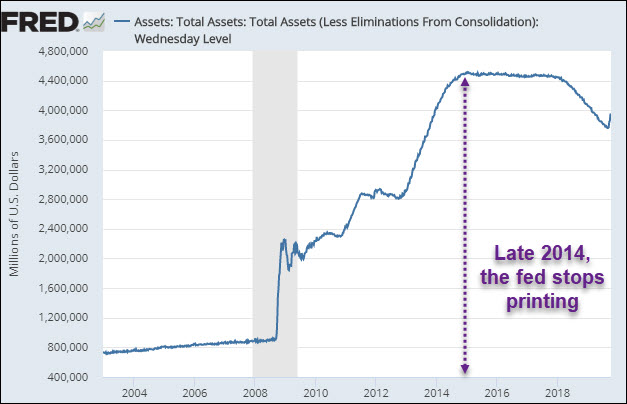
And we can note other important insights in this chart.
For starters, you can clearly see how in 2008, the Fed printed up more money in just a few weeks than it had in the nearly 100 years of operations prior.
…click on the above link to read the rest of the article…
The Real “Helicopter Money”: Since 2009, China Has Created $21 Trillion Of New Money, More Than Double The US
The Real “Helicopter Money”: Since 2009, China Has Created $21 Trillion Of New Money, More Than Double The US
Back in the days of the Fed’s QE, much of thinking analyst world (the non-thinking segment would merely accept everything that the Fed did without question, after all their livelihood depended on it), was focused on how massive, and shocking, the Fed’s direct intervention in capital markets had become. And while that was certainly true, what we showed back in November 2013 in “Chart Of The Day: How China’s Stunning $15 Trillion In New Liquidity Blew Bernanke’s QE Out Of The Water” is that whereas the Fed had injected some $2.5 trillion in liquidity in the US banking system, China had blown the US central bank out of the water, with no less than $15 trillion in increases to Chinese bank assets, all at the behest of a juggernaut of new credit creation – be it new yuan loans, shadow debt, corporate bonds, or any other form of debt that makes up China’s broad Total Social Financing aggregate.
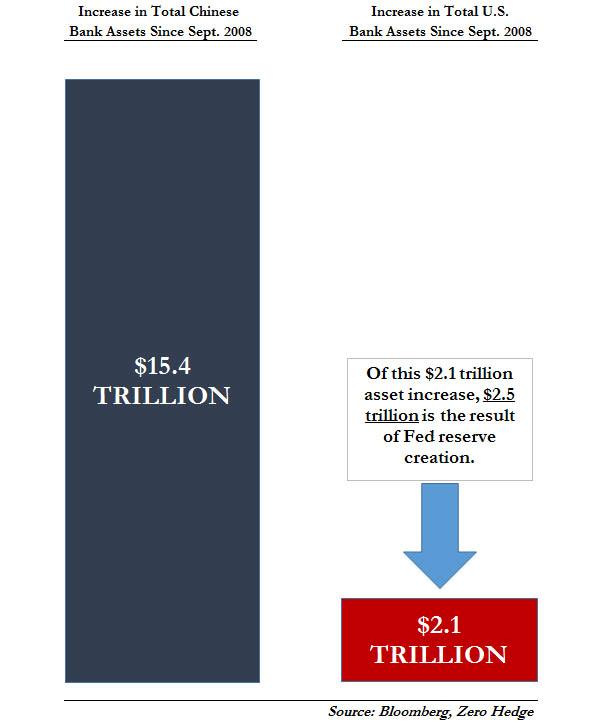
Now, almost six years later, others are starting to figure out what we meant, and in an Op-Ed in the FT, Arthur Budaghyan, chief EM strategist at BCA Research writes about this all important topic of China’s “helicopter” money – which far more than the Fed, ECB and BOJ – has kept the world from sliding into a depression, and yet is blowing the world’s biggest asset bubble.
Budaghyan picks up where we left off, and notes that over the past decade, Chinese banks have been on a credit and money creation binge, and have created RMB144Tn ($21Tn) of new money since 2009, more than twice the amount of money supply created in the US, the eurozone and Japan combined over the same period. In total, China’s money supply stands at Rmb192tn, equivalent to $28 TRILLION. Why does this matter?
…click on the above link to read the rest of the article…
Getting to a Special State of Ugly
Getting to a Special State of Ugly
There are certain phrases – like “trust me” or “I got this” – that should immediately provoke one’s suspicion. When your slippery contractor tells you, “trust me, your kitchen renovation will be done before Christmas,” you should be wary. There’s no way it’ll be done until late spring.
Or when your incompetent client says, “I won’t be needing your services at this time, I got this.” You should expect a panicked phone call at 5pm on Friday. “This is way more than I can handle,” your client will say, “take care of it.”
On Monday, when the sky was falling, and there was much weeping and gnashing of teeth, the Chinese yuan weakened to above 7 per dollar for the first time in over a decade. This prompted U.S. Treasury Secretary Steven Mnuchin to waft out a suspicious phrase of his own. He called China a “currency manipulator.”
Mnuchin’s logic, as far as we can tell, is that China manipulated their currency because their central bank didn’t adequately intervene in foreign exchange markets to prop up the yuan. Conversely, direct intervention into markets, to maintain a centrally planned price that’s acceptable to Mnuchin, is not currency manipulation. Go figure!
On Tuesday, to restore confidence in the yuan, and refute accusations of being a malevolent currency manipulator, the People’s Bank of China (PBOC) announced a plan to price fix the yuan. Specifically, the PBOC will sell 30 billion yuan ($4.2 billion) of offshore bills in Hong Kong on August 14. This move is designed to drain liquidity offshore, thus strengthening the yuan against the dollar.
Why bother?
Cooperative Currency Debasement
The world, circa 2019, is a fabricated reality. Debt, piled upon debt, piled upon debt, ad infinitum, has erected a financial order that’s at perilous odds with the underlying economy. Central bankers attempt to manipulate fake money and fake foreign exchange rates to keep the debt pile from cascading down.
…click on the above link to read the rest of the article…
Weekly Commentary: “Hot Money” Watch
Weekly Commentary: “Hot Money” Watch
In the People’s Bank of China’s (PBOC) Monday daily currency value “fixing,” the yuan/renminbi was set 0.33% weaker (vs. dollar) at 6.9225. Market reaction was immediate and intense. The Chinese currency quickly traded to 7.03 and then ended Monday’s disorderly session at an 11-year low 7.0602 (largest daily decline since August ’15). While still within the PBOC’s 2% trading band, it was a 1.56% decline for the day (offshore renminbi down 1.73%). A weaker-than-expected fix coupled with the lack of PBOC intervention (as the renminbi blew through the key 7.0 level) rattled already skittish global markets.
Safe haven assets were bought aggressively. Gold surged $23, or 1.6%, Monday to $1,441, the high going back to 2013 (trading to all-time highs in Indian rupees, British pounds, Australian dollars and Canadian dollar). The Swiss franc gained 0.9%, and the Japanese yen increased 0.6%. Treasury yields sank a notable 14 bps to 1.71%, the low going back to October 2016. Intraday Monday, 10-year yields traded as much as 32 bps below three-month T-bills, “the most extreme yield-curve inversion” since 2007 (from Bloomberg). German bund yields declined another two bps to a then record low negative 0.52% (ending the week at negative 0.58%). Swiss 10-year yields fell two bps to negative 0.88% (ending the week at negative 0.98%). Australian yields dropped below 1.0% for the first time.
It’s worth noting the Japanese yen traded Monday at the strongest level versus the dollar since the January 3rd market dislocation (that set the stage for the Powell’s January 4th “U-turn). “Risk off” saw EM currencies under liquidation – with the more vulnerable under notable selling pressure. The Brazilian real dropped 2.2%, the Colombian peso 2.1%, the Argentine peso 1.8%, the Indian rupee 1.6% and the South Korean won 1.4%. Crude fell 1.7% in Monday trading. Hong Kong’s China Financials Index dropped 2.5%, with the index down 4.4% for the week to the lowest level since January. European bank stocks dropped 4.1%, trading to the low since July 2016.
…click on the above link to read the rest of the article…
3 Central Bank Shocks Unleash Overnight Yield Crash, With Yuan On Verge Of Collapse
3 Central Bank Shocks Unleash Overnight Yield Crash, With Yuan On Verge Of Collapse
There is just one way to describe the plunge in bond yields overnight and the events behind it: the global race to the currency bottom is rapidly accelerating in its final lap with a global deflationary Ice Age (take a bow Albert Edwards) waiting on the other side.
The main event, of course, was the latest yuan fixing with the PBOC showing a clear sense of humor when it set the currency at 6.9996, laughably not to be confused with 7.0000 (for at least another 24 hours that is), but just a fraction of a percent away from the critical threshold, and weaker than the 6.9977 expected. The result was a resumption in the offshore yuan selloff, a hit to US equity futures and a drop in Treasury yields. Of course, once the PBOC does finally fix the yuan on the wrong side of 7, all bets are off and watch as the CNH crashes… as far as 7.70 according to SocGen, especially once Trump hikes tariffs to 25%.
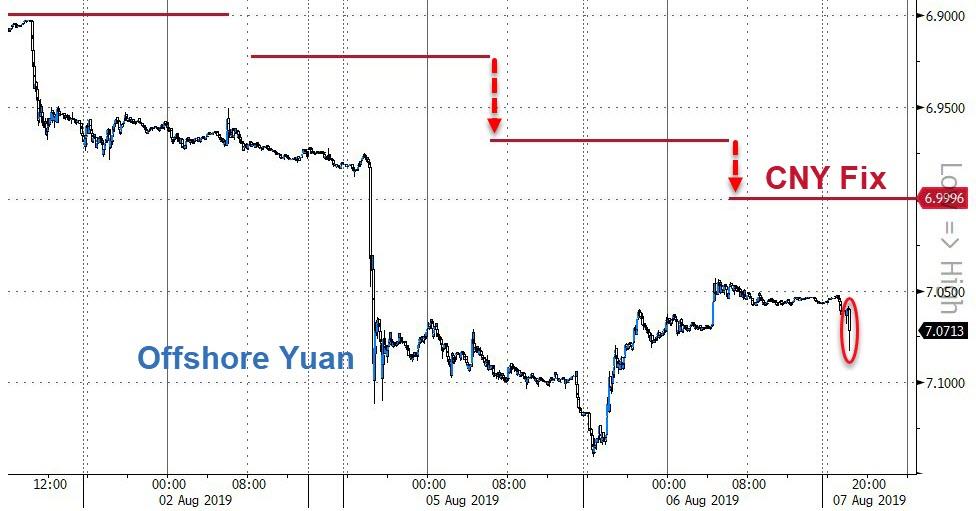
But there was much more in today’s iteration of the global race to the currency bottom, when first New Zealand, then India and finally Thailand shocked investors by being far more dovish than analysts expected. Indeed, the three Asian central banks delivered surprise interest-rate decisions on Wednesday as central bankers not only took aggressive action to counter a worsening global economy, but are now frontrunning each other – and the Fed – in doing so.
As noted last night, New Zealand’s central bank on Wednesday stunned investors by dropping its benchmark rate by 50 basis points, double the expected reduction and sending the kiwi tumbling. Thailand also surprised all but two in a survey of economists, cutting by 25 basis points. Finally, India’s central bank lowered its rate by an unconventional 35 basis points.
…click on the above link to read the rest of the article…





